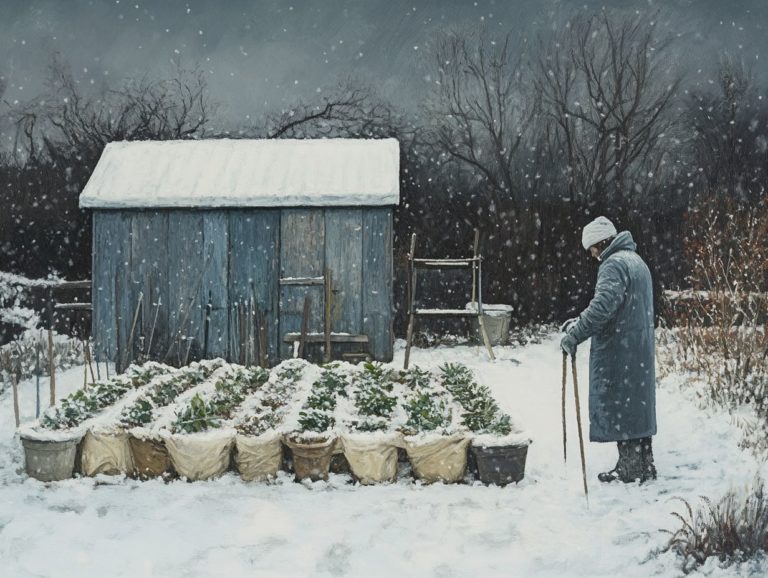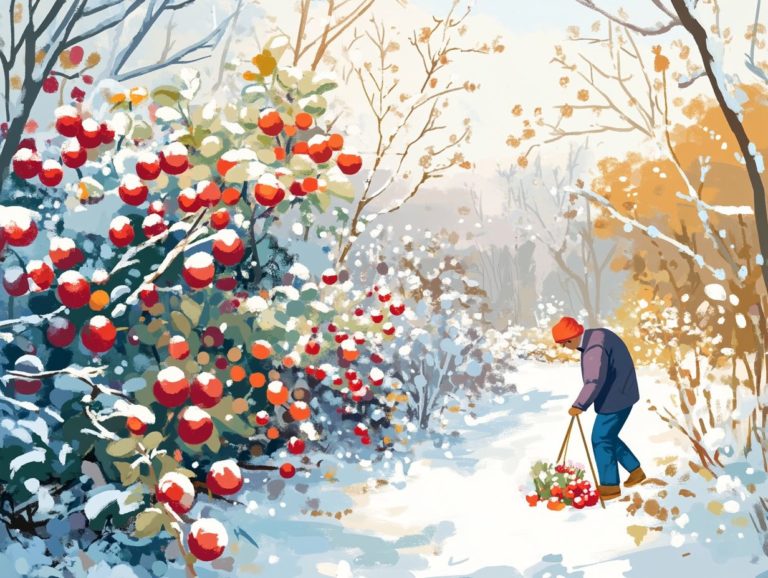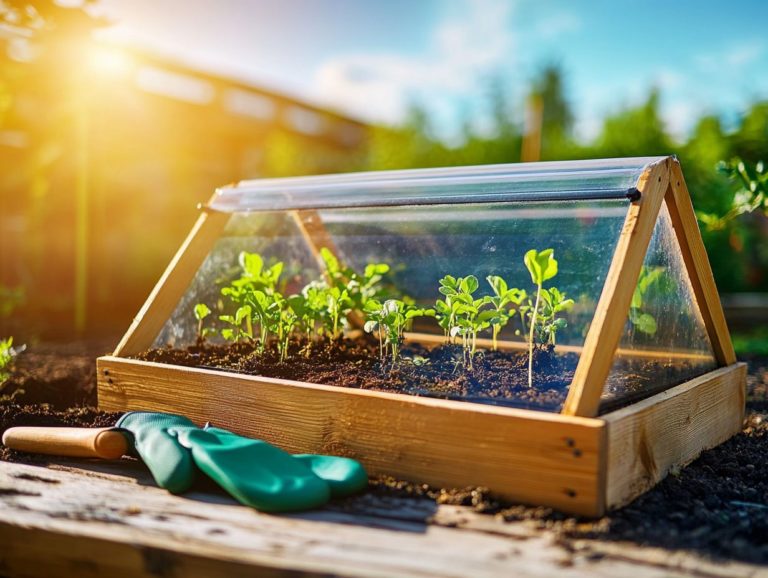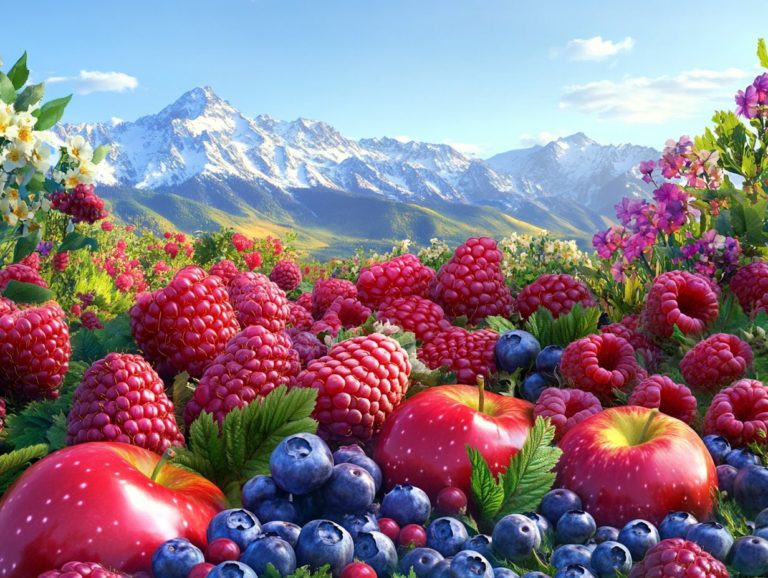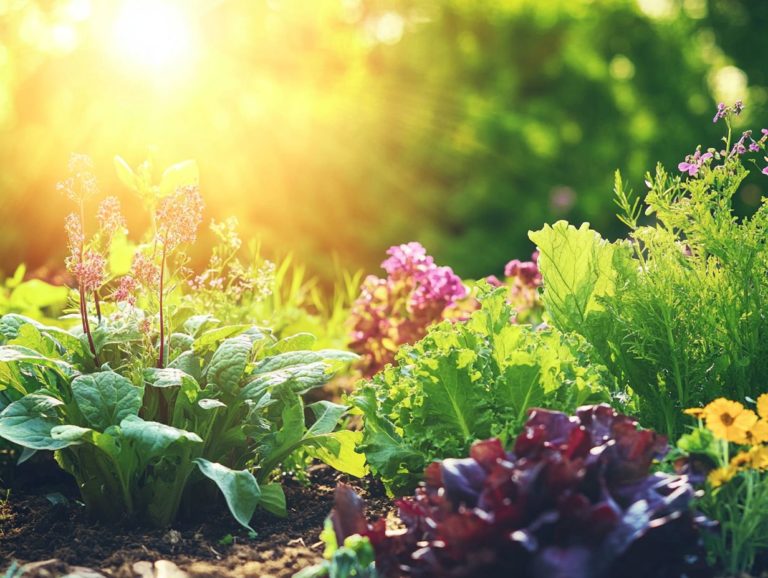What Vegetables Grow Best in Cold Climates?
Get ready to discover the essential elements for successful cold climate gardening! You ll learn about the best cold-tolerant varieties and gain practical tips for preparing your garden to withstand harsh weather.
In this article, you will dive into strategies for maximizing yields and overcoming common obstacles, such as frost. Whether you’re a seasoned gardener or just beginning your journey, these insights will empower you to flourish in cooler conditions.
Contents
Key Takeaways:

- Choose cold-tolerant vegetables to grow in your cold climate garden.
- Prepare your garden for winter by prepping your soil and protecting your plants.
- Maximize yields by implementing strategies specifically for cold climate gardening, such as using row covers and mulching techniques.
Understanding Cold Climate Gardening
Understanding cold climate gardening is all about recognizing the distinct challenges and opportunities that harsh weather conditions offer. These elements can profoundly influence the types of plants that flourish.
By concentrating on cold weather crops like leafy greens and plants in the cabbage family, such as kale and broccoli, you can maximize your yield and enjoy a delightful variety of vegetables during the cooler months.
Using smart planting tips and sowing cold-weather varieties indoors can lead to a successful growing season, enabling early spring harvests and enhancing food production in any garden setting.
Factors to Consider
When planning your cold climate garden, several crucial factors deserve your attention. Pay particular attention to the types of cold-weather and cool-season crops that are best suited for your region s climate.
Understanding your local frost dates, soil type, and the amount of sunlight available will help you carefully select root vegetables and leafy greens that will thrive during the colder months.
In addition to these factors, regularly assessing soil health and moisture levels is essential, as they directly impact plant vitality. A simple soil test can reveal any nutrient deficiencies, while a soil moisture meter can help you gauge when your plants need watering.
Selecting the right vegetable seeds tailored to specific small areas where the climate is slightly different will ensure stronger growth. Timing your planting based on local climate indicators is critical for achieving optimal harvests, allowing you to enjoy fresh produce all season long.
Best Vegetables for Cold Climates
Choosing the right vegetables for cold climates is crucial for optimizing your garden’s productivity, especially when you aim to cultivate crops that thrive in chilly temperatures.
Hardy and cold-tolerant varieties, like Brassica plants such as kale, spinach, and Swiss chard, along with legumes like peas and root vegetables like beets, excel even in tough conditions.
These selections are not just resilient; they are perfect contenders for your cold-season gardening endeavors!
Hardy and Cold-Tolerant Varieties
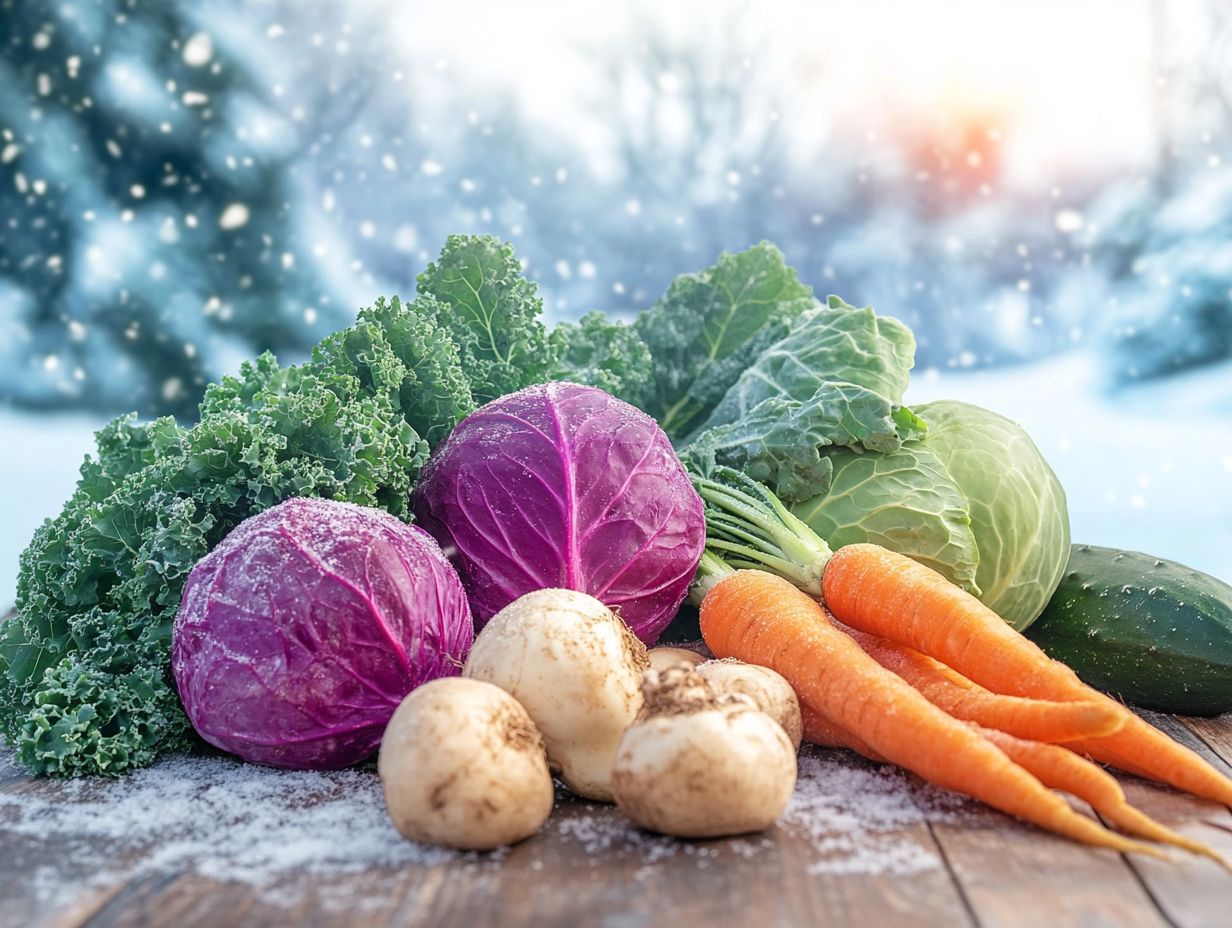
In cold climate gardening, many options exist. Hardy and cold-tolerant vegetable varieties like garlic, cilantro, radishes, carrots, lettuce, and arugula thrive in low temperatures.
These vegetables not only survive frost but often taste better after a freeze, making them essential for your winter garden.
To maximize their potential, plan your planting schedule carefully. Sow seeds in late summer or early autumn to enjoy a delightful harvest.
Regular mulching is vital to retain soil moisture and protect roots from damaging freeze-thaw cycles. Harvesting just after a frost can enhance taste and texture, leading to a generous winter bounty.
By following these best practices, you will cultivate healthier plants and achieve abundant yields.
How to Prepare Your Garden for Cold Weather
Preparing your garden for cold weather ensures plants not only survive but thrive during the frigid months. Start by amending your soil to improve drainage and fertility.
Protect your plants from harsh winds and frost for best results. Understanding indoor gardening will also help, especially with cold-weather crops.
Use methods like direct seeding outdoors or proper timing for your seedlings. These techniques can boost your garden’s performance.
Prepping Soil and Protecting Plants
Soil preparation and plant protection are key for successful cold climate gardening. Enhancing your soil with organic matter improves its fertility and structure.
Apply mulch and use plant covers to shield your crops from harsh conditions. Well-rotted compost, leaf litter, or straw as organic amendments can significantly enhance moisture and nutrient retention.
When applying mulch, use a layer of about three to four inches. This will help insulate the soil and reduce damaging freeze-thaw cycles.
Plant covers like row covers or cloches provide warmth and protect against fierce winds and frost.
These practices will improve soil health and promote beneficial microbial activity, keeping your garden productive even in the cold.
Tips for Successful Cold Climate Gardening
Effective strategies for cold climate gardening can boost your garden’s productivity. Focus on cool-weather plants and employ indoor planting techniques to enjoy fresh produce all winter.
Using meticulous transplanting methods will maximize your yields. Get ready to savor your winter harvest!
Strategies for Maximizing Yields
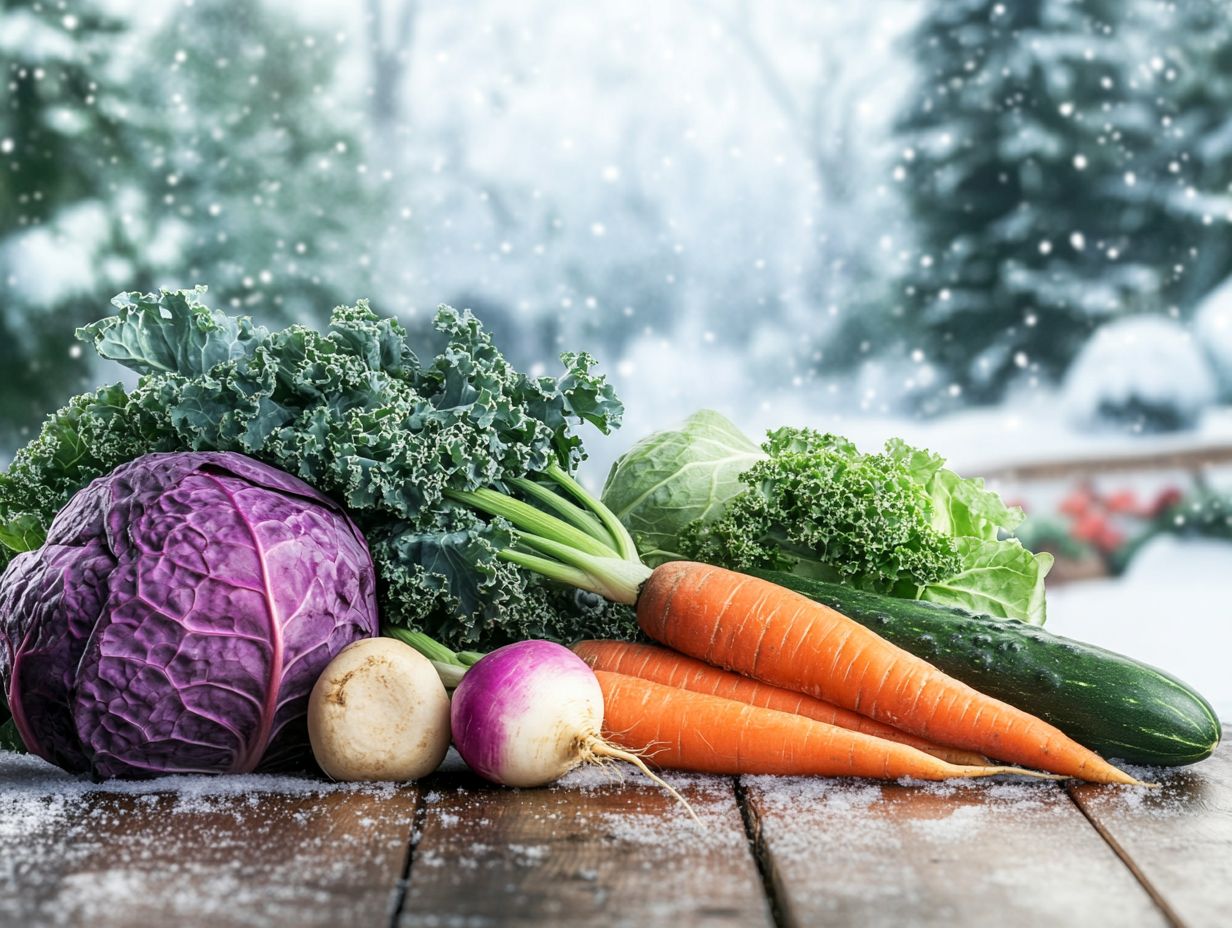
Maximizing yields in cold climate gardening requires you to blend strategic planning with effective practices designed to tackle the unique challenges of planting cold-season crops. Techniques like companion planting and crop rotation enhance soil health and fortify cold-hardy vegetables against harsh conditions.
By thoughtfully selecting compatible crops such as pairing carrots with onions to naturally deter pests you can create a healthy garden environment that fosters growth. For instance, adopting a rotation schedule where legumes precede leafy greens can replenish nitrogen levels in your soil, giving your plants a nutrient boost.
Extending your growing season can significantly impact your overall productivity. Row covers protect plants from frost, while greenhouses and cold frames create a controlled environment for earlier planting and extended harvesting.
These methods ensure a diverse yield and optimize the efficiency of your cold climate gardening efforts.
Common Challenges and Solutions
Navigating the challenges of cold climate gardening requires awareness of common issues that affect the health and yield of your cold-weather crops. You must remain vigilant against threats such as frost damage, pest management, and plant diseases that can undermine your gardening endeavors.
However, with the right strategies in place, you can tackle these challenges head-on and grow a flourishing garden, even in the chill of winter.
Dealing with Frost and Other Issues
Navigating frost and other challenges in cold climate gardening is crucial for maintaining the vitality and productivity of your cold-hardy vegetables. By implementing protective measures like row covers, mulching, and mastering methods to lengthen the growing period, you can reduce the impact of frost and ensure your plants continue to flourish.
In addition to these strategies, consider using insulated plant covers made from materials like fleece or burlap for extra warmth on particularly frigid nights.
Regularly assessing your plants’ health is equally essential. Keep an eye out for signs of stress, such as wilting or discoloration, which may signal a need for additional care.
Enhancing soil quality with organic matter can significantly bolster your plants’ resilience, helping them handle sudden temperature drops more effectively.
Grouping your plants together creates a microenvironment that retains warmth and humidity, offering them an extra layer of protection against harsh frosty conditions.
Frequently Asked Questions
What Vegetables Grow Best in Cold Climates?
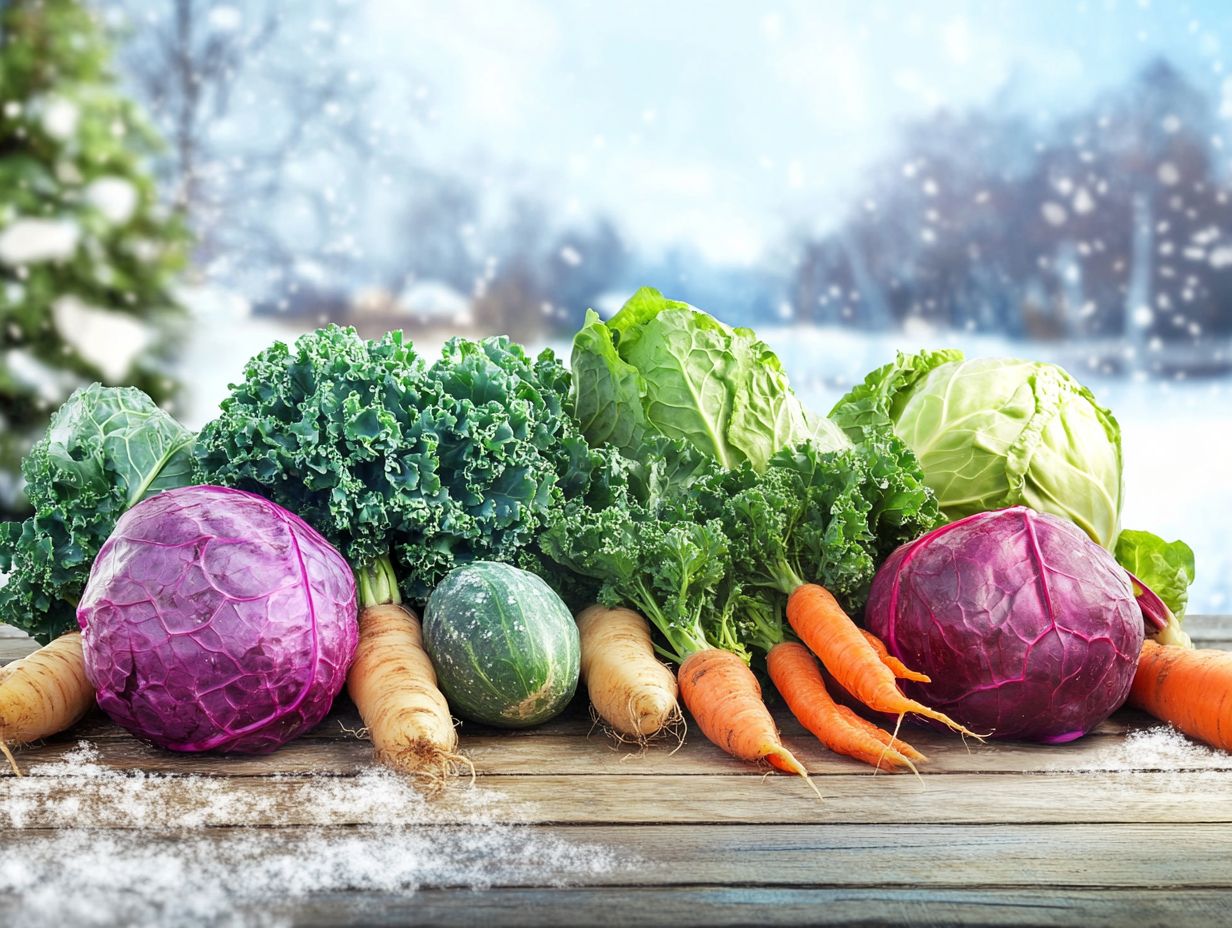
Some vegetables that grow well in cold climates are root vegetables like carrots, turnips, and radishes; leafy greens such as kale and spinach; and cruciferous vegetables like broccoli and cauliflower.
Which Vegetables Can Survive Frost?
Root vegetables like beets and parsnips can survive frost, as well as leafy vegetables like collard greens and Brussels sprouts.
Are There Any Vegetables that Can Grow in Snow?
Absolutely! Hardy vegetables like winter squash and kale can thrive even in snowy conditions.
Can I Grow Vegetables in a Greenhouse in a Cold Climate?
Yes, a greenhouse provides a warmer and more stable environment for growing vegetables in a cold climate. You can extend the growing season by starting seeds indoors and transplanting them into the greenhouse.
What is the Best Time to Plant Vegetables in a Cold Climate?
The best time to plant vegetables in a cold climate is early spring, as soon as the ground can be worked. You can also plant certain vegetables in late summer for a fall harvest.
Do I Need to Protect My Vegetables from the Cold?
It is recommended to protect your vegetables from the cold using mulch, row covers, or cloches. These can help insulate the soil and protect plants from frost and freezing temperatures.

